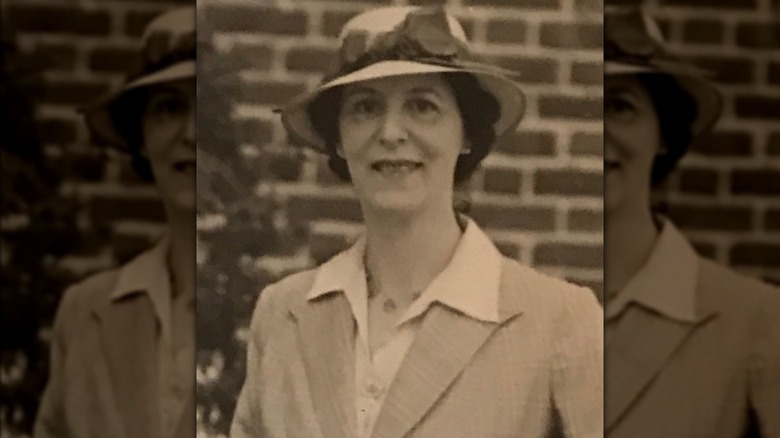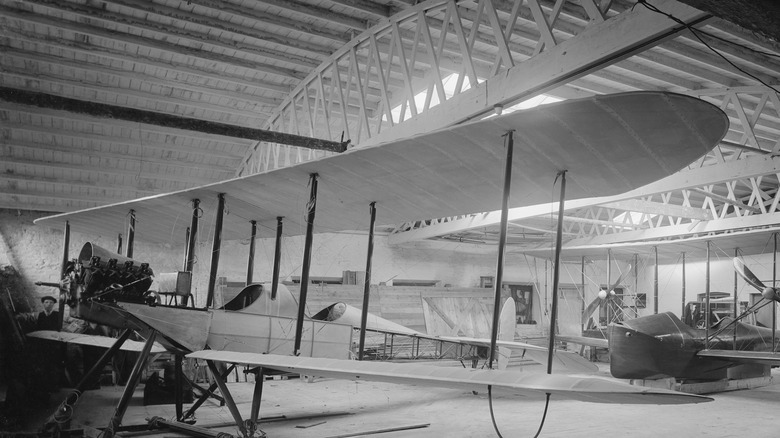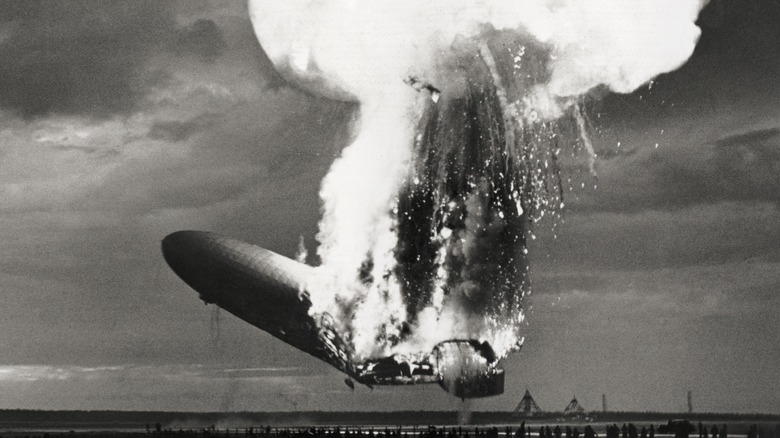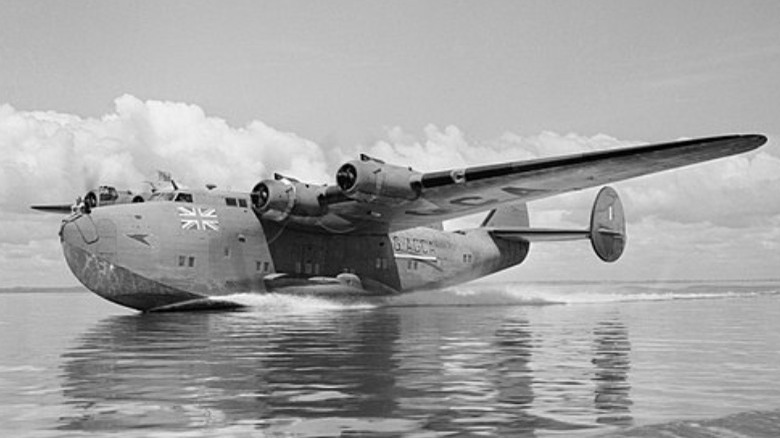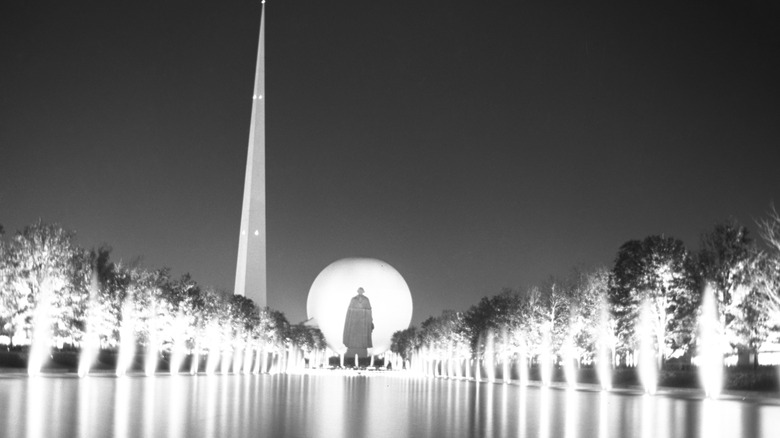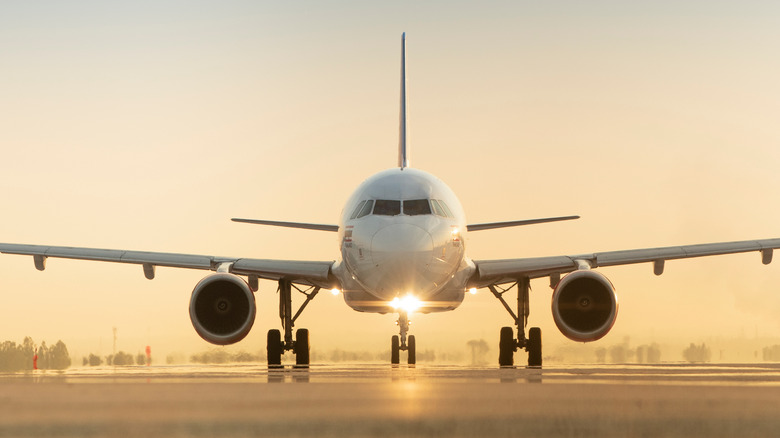How Clara Adams Became An Aviation Pioneer Without Ever Flying A Plane
Everyone remembers the daring exploits of early pilots like Charles Lindbergh and Amelia Earhart, but how did air travel evolve from solo stunts to the almost mundane commercial affair it is today? One person who helped make that shift possible was Clara Adams. Adams never sat behind the controls of a flight herself, but she was still one of the pioneers of early aviation. How? She was the passenger on 150,000 miles of maiden flights, according to John Lienhard at the University of Houston.
Earning nicknames like the "first flighter" and the "maiden of maiden voyages," Adams helped convince the world that flying could be a viable form of travel for ordinary people, according to Atlas Obscura. Florida Atlantic University historian Barbara Ganson said that it was not guaranteed that aviation would develop into a method of transportation for everyday passengers. Even the military had doubts. But Adams helped the public gain confidence in the new technology. "Clara Adams spurred interest in air travel," Ganson said. In doing so, she helped make her own 1928 prediction come true. "It is only a matter of time," she wrote, "when regular air transportation service will be as commonplace as a bus ride."
Taking off
Clara Adams was born Clara Grabau in Cincinnati in 1884, according to John Lienhard at the University of Houston. She studied music in Leipzig, Germany where her mother lived next door to Count Zeppelin. She then married George L. Adams, a wealthy man 40 years her senior who owned several Pennsylvania tanneries and was the president of the American Leather Tanning company, according to Airships.net. Her husband died in 1929 and she found herself a well-to-do widow with the means and time to travel.
Adams took her first flight in 1914 in a Thomas flying boat flown by Army Captain Walter E. Johnson. The flight reached a record 700 feet above Lake Eustis in central Florida and cost $10, according to Atlas Obscura. At first, she was frightened. "My heart was going as fast as the motor," she recalled. However, that didn't deter her. "I was a mere youngster but it was an experience that marked the beginning of years of flying," she recalled, according to Airships.net. Just three years later, she went up in a Wright Flyer flown by Marjorie Stinson, one of the first female pilots in the U.S., according to Atlas Obscura. Adams would go on to befriend several early female pilots, including Amelia Earhart.
Dirigible defender
After World War I, Clara Adams became an avid promoter of dirigible travel. In 1924, Field Marshal Paul von Hindenburg wrote her a letter of introduction to Hugo Eckener, according to Airships.net. Hindenburg, who would go on to be president of Germany, was her grandmother's cousin. Eckener, the head of the Zeppelin Company, invited her to take a test flight on the LZ-126/ZR-III, according to John Lienhard at the University of Houston and Airships.net. Four years later, she became the first woman to buy a transatlantic air ticket on the maiden voyage of the airship Graf Zeppelin from North American to Europe, according to Airships.net.
She was also a passenger on the first flight of the zeppelin Hindenburg from Germany to the U.S. in 1936. Then, on May 6, 1937, tragedy struck. The Hindenburg caught fire as it came in to land in New Jersey and fell to the ground, killing 35 of its 97 passengers and one bystander, according to Smithsonian Magazine. There are some accounts that Adams was one of the spectators who witnessed the Hindenburg disaster, but historians are not sure whether this is true, according to Atlas Obscura. What is clear is what she did the day after. "I wrote out my check for $100 to be held as a deposit for the first ticket for the new dirigible, LZ-130 ... This I did to prove that I had not lost confidence in dirigible travel," she recalled, according to Airships.net.
Frequent flyer
While Adams defended dirigibles, she did not limit herself to them. She also was an early passenger on flying boats. Flying boats were essentially flying cruise ships, according to the Smithsonian National Air and Space Museum. They took off and landed on water, which was an advantage for early air travel because major coastal cities had ports and did not need to build long airfields. Therefore, they were the main form of long-haul air travel by 1939. Adams was the only paying female passenger on the Dornier DO-X flying boat from Rio de Janeiro to New York in 1931, according to the Airships website. This made her the first woman to fly as an airplane passenger across the Atlantic, according to John Lienhard at the University of Houston.
The most famous type of flying boat was the Pan Am Clipper, according to Clipper Flying Boats. Adams was an early passenger on several important Pan Am Clipper flights. For one, she traveled across the Pacific on the inaugural flight of Pan Am's China Clipper in 1936, according to the University of Texas at Dallas. She was a passenger on the maiden voyages of Pan Am's Hawaii and Bermuda Clippers, both named for their destinations. In 1940, she was on the first passenger flight from the U.S. to New Zealand in Pam Am's American Clipper, according to Airships. She was also the first passenger to cross the continental U.S., this time in a Boeing Stratoliner, according to Lienhard.
Around the world
Perhaps Clara Adams' most famous flight, or series of flights, came in 1939. This is when she became the fastest person to travel around the world by commercial airline, according to Atlas Obsucra. Adams took off from Long Island at 3:12 p.m. on June 28. For the first leg of the journey, she flew on Pan Am's Dixie Clipper, a Boeing 314 flying boat, according to Airships. Over the next 16 days and 19 hours, she would stop in Horta, Lisbon, Marseille, Leipzig, Athens, Basra, Jodphur, Rangoon, Bangkok, Hong Kong, Manila, Guam, Wake Island, Midway Island, Honolulu, and San Francisco. Finally, she landed in Newark at 9:16 a.m., The New York Times reported. She announced that she had "not a gray hair in my head, proving that flying is safe." The entire trip was 24,609 miles and cost her $1,935, the equivalent of around $40,000 today, according to Atlas Obscura.
The whole event was as much public spectacle as it was a vacation. Adams had been racing against New York broker Norman L. Lee. After landing, Adams immediately headed to Queens, New York, where she shared her experiences in the aviation pavilion at the World's Fair. "When we were young we all read about the famous magic flying carpet. I have just flown on a good many carpets." She told her audience. "I wish all could have the opportunity to enjoy that same experience."
The legacy of Clara Adams
Clara Adams' days of groundbreaking jet-hopping came to an end with World War II, according to Atlas Obscura. She could not fly during the war, and, when it was over, the world had changed. By the 1960s, air travel was still glamorous, but much more accessible. During the so-called "golden age" of air travel, passengers no longer needed a pioneer like Adams to convince them it was possible. Instead, it was time to commemorate past achievements. In 1966 she, together with five other original passengers and crew members, took part in a 30th anniversary flight honoring the first passenger flight across the Pacific, according to the University of Texas at Dallas. She was also one of 50 honorees at the Explorers Club tribute dinner to the aviation industry in 1968.
She died February 10, 1971, yet her legacy lives on. Adams popularized air travel not only through the flights themselves, but by promoting them with lecture tours, news coverage, and autograph signing, according to Airships. As John Lienhard points out, the early days of commercial passenger aviation were not necessarily a sure thing. It took decades of courage, intelligence, hard work, and even experimentation to make flying the commonplace experience it is today — "coming and going in airplanes that're now as functional and unimpressive as old shoes." So next time you board an airplane, give a thought to Clara Adams.
